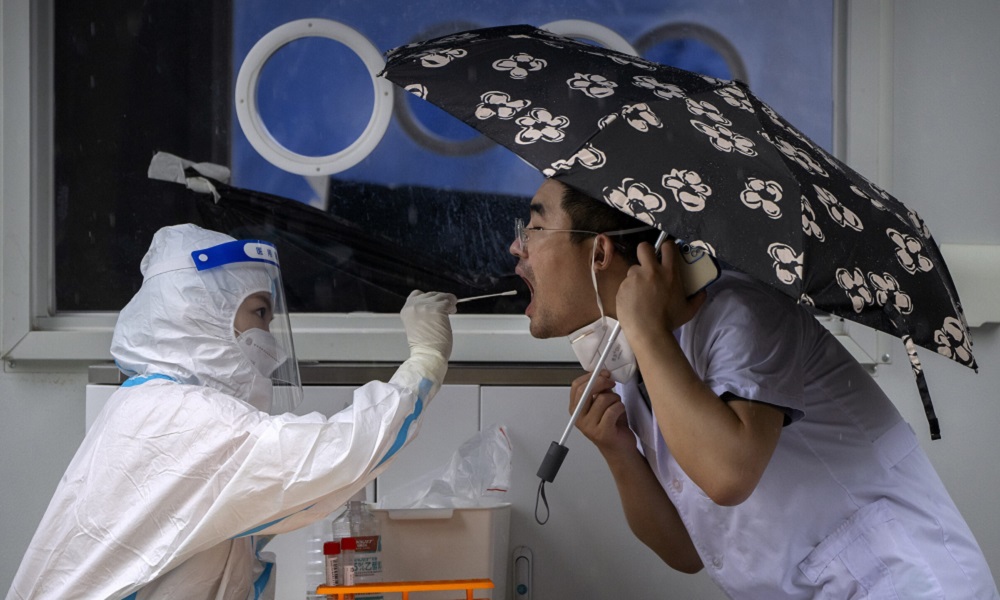COVID-19
Tackling COVID-19 in Afghanistan with international aid

One of the greatest challenges Afghanistan faces in its fight against the Coronavirus pandemic is the overwhelming demand placed on its fragile health system.
But since April, the Ministry of Public Health has signed into action the $100 million World Bank-supported COVID-19 emergency response grant for the Afghanistan COVID-19 Emergency Response and Health Systems Preparedness Project.
In line with this, the Afghan government has been able to create 1,300 intensive care unit beds and care better for up to 10,000 hospitalized COVID-19 patients.
In a World Bank report, by Doctors Fraidoon Farzad and Ahmad Wali Rasekh - both from the Public Health Ministry - they said the Afghan government has been able to support infected individuals, at-risk people, medical and emergency personnel, service providers and medical and testing facilities.
They said this project is well underway with the collaboration of several stakeholders, including the United Nations Children's Fund (UNICEF) which flew in emergency health supplies in June, including single-use medical supplies for intensive care units (ICUs), X-ray and laboratory reagents, and 150,000 personal protective equipment (PPE) kits for more than 6,800 frontline health care providers.
“These supplies have enabled health workers, who are at high risk of exposure, to identify and care better for up to 10,000 hospitalized COVID-19 patients. The project has also added almost 1,300 intensive care unit beds across the country,” they said.
پروژه پاسخدهی اضطراری به بحران کووید-۱۹ بانک جهانی با دولت افغانستان کمک می کند تا ۸۰ فیصد از داکتران و نرس های شفاخانه های ولایتی آموزش های وقایه و تداوی ویروس کووید۱۹ را مطابق به معیار های سازمان صحی جهان دریافت نمایند. بیشتر بخوانید: https://t.co/2jB9Z6q6i1 pic.twitter.com/IBDNCDEEOR
— World Bank South Asia (@WorldBankSAsia) August 27, 2020
In addition, with the World Health Organization (WHO), seven existing laboratories have been equipped, and two new ones set up for COVID-19 testing under the project.
Raising public awareness around the pandemic was also crucial in trying to slow the spread of coronavirus and in line with this, the project helped disseminate 10,000 radio, television and print messages on the virus, its symptoms and prevention between April and August.
"The project aims to lower COVID-19 testing turnaround to 48 hours or less for 70 percent and reach a 50 percent public awareness rate," read the report.
“With the assistance of the international community and financial support from organizations such as the World Bank, we have high hopes of saving countless lives and further strengthening the health care system on which millions of Afghans depend each day,” the two doctors stated.
So far, Afghanistan has 38,113 reported cases but early this month the Ministry of Public Health said about 10 million Afghans had been infected with the virus.
Addressing a press conference, acting Health Minister Jawad Osmani said according to a survey conducted across the country, 31.5 percent of Afghans – which is about 10 million people – have contracted COVID-19.
He said the survey had been based on antibody tests on people across the country, with technical support from the World Health Organisation.
The highest infection rate was in Kabul where more than half of the city’s five million population was thought to have been infected.
Osmani said 37 percent of the population in cities and 27 percent of the population in villages have been infected with the virus.
COVID-19
WHO declares end to COVID global health emergency

The World Health Organization said Friday that COVID-19 no longer qualifies as a global emergency, marking a symbolic end to the devastating coronavirus pandemic that triggered once-unthinkable lockdowns, upended economies and killed millions of people worldwide.
The announcement, made more than three years after WHO declared the coronavirus an international crisis, offers some relief, if not an ending, to a pandemic that stirred fear and suspicion, hand-wringing and finger-pointing across the globe, AP reported.
The U.N. health agency’s officials said that even though the emergency phase was over, the pandemic hasn’t finished, noting recent spikes in cases in Southeast Asia and the Middle East.
WHO says thousands of people are still dying from the virus every week, and millions of others are suffering from debilitating, long-term effects.
“It’s with great hope that I declare COVID-19 over as a global health emergency,” WHO Director-General Tedros Adhanom Ghebreyesus said.
“That does not mean COVID-19 is over as a global health threat,” he said, warning that new variants could yet emerge. Tedros noted that while the official COVID-19 death toll was 7 million, the real figure was estimated to be at least 20 million.
Tedros said the pandemic had been on a downward trend for more than a year, acknowledging that most countries have already returned to life before COVID-19.
He bemoaned the damage that COVID-19 had done to the global community, saying the pandemic had shattered businesses, exacerbated political divisions, led to the spread of misinformation and plunged millions into poverty.
When the U.N. health agency first declared the coronavirus to be an international crisis on Jan. 30, 2020, it hadn’t yet been named COVID-19 and there were no major outbreaks beyond China.
More than three years later, the virus has caused an estimated 764 million cases globally and about 5 billion people have received at least one dose of vaccine.
In the U.S., the public health emergency declaration made regarding COVID-19 is set to expire on May 11, when wide-ranging measures to support the pandemic response, including vaccine mandates, will end. Many other countries, including Germany, France and Britain, dropped most of their provisions against the pandemic last year.
When Tedros declared COVID-19 to be an emergency in 2020, he said his greatest fear was the virus’ potential to spread in countries with weak health systems.
Most recently, WHO has struggled to investigate the origins of the coronavirus, a challenging scientific endeavor that has also become politically fraught.
COVID-19
COVID-19 in Iran: Nearly 900 new cases, 24 deaths recorded

The Iranian health ministry announced on Sunday that more than 890 new cases of COVID-19 have been identified across the country during the past 24 hours, adding that 24 patients have died in the same period of time, Fars News Agency reported.
"A sum of 891 new patients infected with COVID-19 have been identified in the country based on confirmed diagnosis criteria during the past 24 hours," the Iranian Health Ministry's Public Relations Center said on Sunday, adding, "454 patients have been hospitalized during the same time span."
The ministry’s public relations center said 611 people infected with COVID-19 are in critical condition.
COVID-19
China says 200 million treated, pandemic ‘decisively’ beaten

China says more than 200 million of its citizens have been diagnosed and treated for COVID-19 since it lifted strict containment measures beginning in November.
With 800,000 of the most critically ill patients having recovered, China has “decisively beaten” the pandemic, according to notes from a meeting of the ruling Communist Party’s all-powerful Politburo Standing Committee presided over by President and party leader Xi Jinping, AP reported.
China enforced some of the world’s most draconian lockdowns, quarantines and travel restrictions and still faces questions about the origins of the virus that was first detected in the central Chinese city of Wuhan in late 2019. Heavy-handed enforcement prompted rare anti-government protests and took a heavy toll on the world’s second-largest economy.
The official Xinhua News Agency quoted Xi as saying that policies to control the outbreak had been “entirely correct.” The abrupt lifting in November and December of the “zero COVID” policy that had sought to eliminate all cases of the virus led to a surge in infections that temporarily overwhelmed hospitals.
Case numbers have since peaked and life has largely returned to normal, although international travel in and out of China has yet to return to pre-pandemic levels.
China is now transitioning to a post-pandemic stage after a fight against the outbreak that was “extraordinary in the extreme,” Xinhua said.
The government will continue to “optimize and adjust prevention and control policies and measures according to the times and situations with a strong historical responsibility and strong strategic determination,” Xinhua said.
-

 Latest News4 days ago
Latest News4 days agoAfghanistan seals T20I series victory over Zimbabwe
-

 World5 days ago
World5 days agoSyrian clerics in former Assad stronghold call for national unity, democracy
-

 Latest News4 days ago
Latest News4 days agoU.S. sentences Afghan man to 30 years in prison for narco-terrorism and witness tampering
-

 International Sports4 days ago
International Sports4 days agoMessi vs Ronaldo: A look at their market values over the years
-

 Latest News4 days ago
Latest News4 days agoInvestment in Afghanistan’s pharmaceutical sector reaches $300 million: Union
-

 Latest News5 days ago
Latest News5 days agoChinese, Tajik officials discuss Afghanistan
-

 Sport4 days ago
Sport4 days agoAfghanistan’s Gulbaddin Naib fined 15% of match fee for dissent
-

 Regional4 days ago
Regional4 days agoHezbollah chief says group lost its supply route through Syria
























